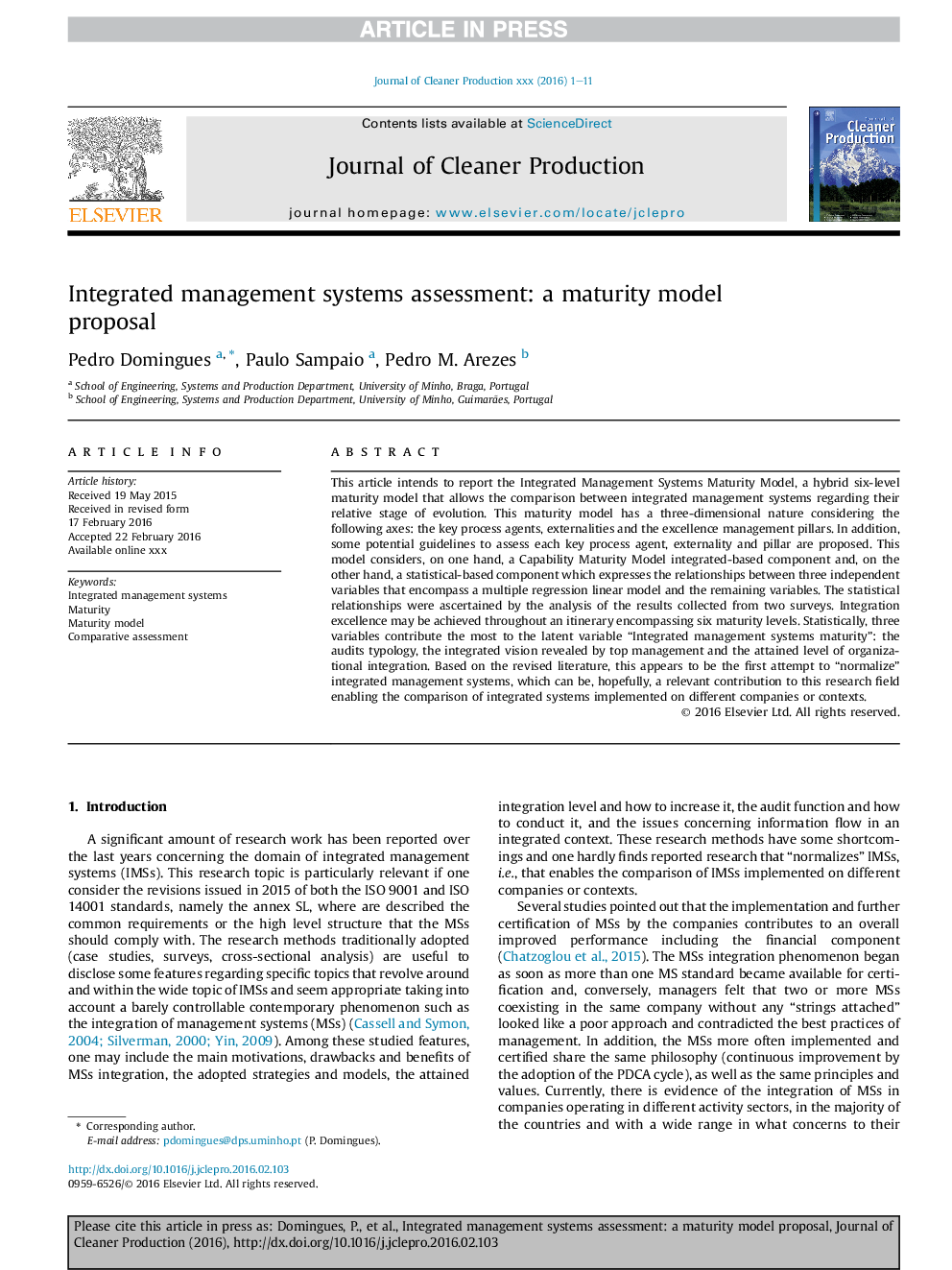| Article ID | Journal | Published Year | Pages | File Type |
|---|---|---|---|---|
| 8102298 | Journal of Cleaner Production | 2016 | 11 Pages |
Abstract
This article intends to report the Integrated Management Systems Maturity Model, a hybrid six-level maturity model that allows the comparison between integrated management systems regarding their relative stage of evolution. This maturity model has a three-dimensional nature considering the following axes: the key process agents, externalities and the excellence management pillars. In addition, some potential guidelines to assess each key process agent, externality and pillar are proposed. This model considers, on one hand, a Capability Maturity Model integrated-based component and, on the other hand, a statistical-based component which expresses the relationships between three independent variables that encompass a multiple regression linear model and the remaining variables. The statistical relationships were ascertained by the analysis of the results collected from two surveys. Integration excellence may be achieved throughout an itinerary encompassing six maturity levels. Statistically, three variables contribute the most to the latent variable “Integrated management systems maturity”: the audits typology, the integrated vision revealed by top management and the attained level of organizational integration. Based on the revised literature, this appears to be the first attempt to “normalize” integrated management systems, which can be, hopefully, a relevant contribution to this research field enabling the comparison of integrated systems implemented on different companies or contexts.
Related Topics
Physical Sciences and Engineering
Energy
Renewable Energy, Sustainability and the Environment
Authors
Pedro Domingues, Paulo Sampaio, Pedro M. Arezes,
